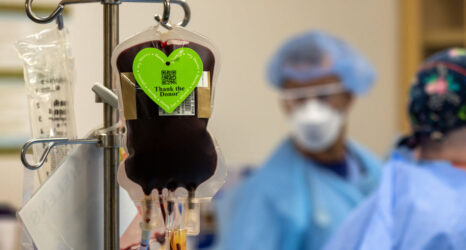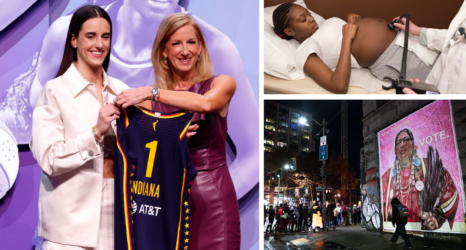The rate of maternal deaths and illnesses worldwide is shockingly high. We can and must do something about it now. Here’s one way; stay tuned for more. (This is the second of a three-part series.)
By Francine Coeytaux and Belle Taylor McGhee
To lower maternal mortality in developing countries, contraception and abortion must be made legal, accessible and affordable.
Giving women and girls the power to manage their reproductive lives is crucial, and that includes access to safe abortion. According to the World Health Organization, an estimated 20 million unsafe abortions take place every year. Worldwide, approximately 67,000 women annually die from complications from such procedures, and another estimated 5 million women per year suffer long-term injuries.
The benefits of legalizing abortions can be huge. Tunisia, for example, has legalized abortion and integrated it into the national family-planning program, but its neighbor Algeria has not. So now, although the two countries share a similar population (predominately Arab and Muslim), common history (former French colonies) and similar development indicators (GNP, literacy, life expectancy), women in Algeria are more than twice as likely to die from pregnancy-related complications as Tunisian women. Since the two countries also have similar birth practices (95 percent delivered by skilled birth attendants) and rates of contraception usage, the best explanation for the differential is that Tunisian women have abortions under safe conditions whereas Algerian women must risk their lives to end a pregnancy.
India is another country that has focused on reducing maternal deaths by improving access to safe abortion. Although the government legalized abortion in 1971, the majority of women in the country have lacked access to safe abortions services. So in 2002, the Indian government passed an amendment expanding safe services and regulating the quality of abortion services. While much work still needs to be done, improved access to safe abortion has likely contributed to the steady progress India has made in reducing maternal deaths.
In far too many countries, women not only can’t easily obtain safe abortions, but they face obstacles in preventing unwanted pregnancies. In fact, according to the UNFPA, about 200 million women and girls globally who want to use contraceptives don’t have access to them.
For example, a 2006 survey of women in Uganda found that 41 percent of women wished to space their pregnancies further apart—a key health factor for both mothers and children—but lacked access to contraception and familyplanning services. Although Uganda has one of the highest maternal mortality rates in the world, its government has failed to allocate more resources to solve its shortage of contraceptive supplies. Similarly, in Zambia, where the Pill is the most commonly used method of birth control, empty dispensaries are all too common. Health-care workers in rural outposts sometimes cut the remaining few packages of pills into strips in a misguided attempt to serve as many women as possible. And in Ethiopia, where contraceptive supplies are also severely limited, some women walk long distances to the nearest health facility in search of birth control—only to leave empty-handed. Health-care workers lament that there is little they can do about the supply shortage, and worry that some women may seek unsafe abortions when faced with an unwanted pregnancy.
In this year that we celebrate the 50th anniversary of the birth control pill, it’s a good time to recommit to making modern contraceptives and family planning services accessible to women around the world.
Excerpted from the article “Time to Save Women’s Lives” in the Spring issue of Ms. To have this issue delivered to your door, join the Ms. community.
FRANCINE COEYTAUX is a longtime women’s health advocate and a member of the board of directors of Women’s Dignity.
BELLE TAYLOR-MCGHEE, a former television news journalist,is president of the California Coalition for Reproductive
Freedom and former president and CEO of the Pacific Institute for Women’s Health.
Comments on this piece? We want to hear them! Send to letterstotheeditor@msmagazine.com. To have your letter considered for publication, please include your city and state.





